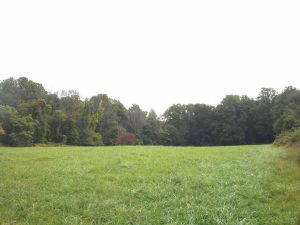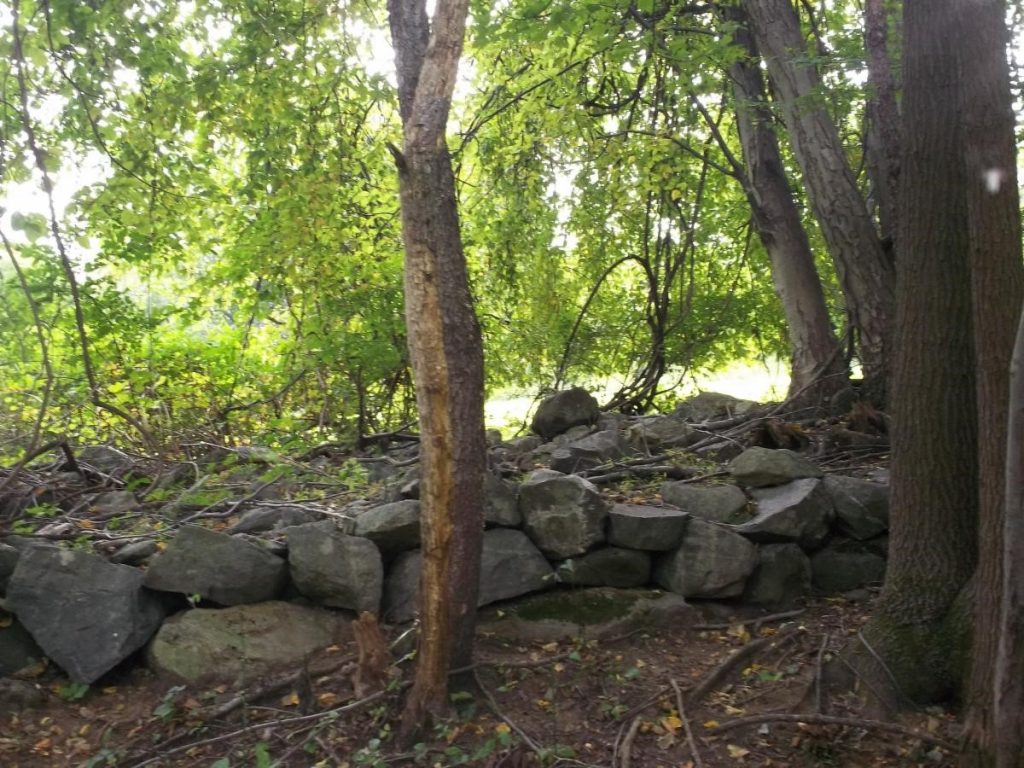We live in a special place.
Before us, a ribbon of rugged forests unfurls; rolling hills shelter bucolic valleys; and trickling headwater creeks tumble into far-reaching networks of rivers, lakes, and reservoirs.
These are the Oley Hills: an eclectic mixture of rural character and natural wonder encircling the Oley Valley basin in Berks County, Pennsylvania.
Whereas the Oley Valley is underlain by limestone, gifting the basin with superior farmland, the Reading Prong formation sustains the Oley Hills. The irregular ridges and deep valleys of this jagged landscape reflect its underlying geology, an erosion-resistant combination of basalt, gneiss, and quartzite.
While difficult to build upon as people, among these crags and boulders trees have taken root. A 27,000-acre band of furrowed forest shelters the Valley, making the Oley Hills one of the largest intact swaths of woodland in Berks County.
Hidden among this wooded expanse, six Exceptional Value streams spill over the Oley Hills’ rocky terrain. This is the highest designation level achievable by waterways in the Commonwealth, an esteemed moniker granted to just 4% of all Pennsylvania streams. The Exceptional Value designation signifies the ability of the Oley Hills’ watersheds to support a thriving web of life and puts in place rigorous standards to keep these ecosystems and their services intact.
From this severe topography, people have extracted iron for their furnaces and forges, the region’s first industry. From the pure headwater streams, which all ultimately flow into the Schuylkill River, communities withdraw their drinking water. From this flourishing mosaic of fields and forests, numerous threatened and endangered species – from rare plants, to migratory birds, to sensitive amphibians and reptiles – find refuge.
Yes, we live in an increasingly rare and special place; one that continues to exist today by no accident.
At the close of the 20th century, Pennsylvania had one of the highest rates of land development in the United States, ranking 5th in the country in land conversion rate. Much of this suburban sprawl claimed prime farmland and forestland, well removed from traditional urban centers, thus challenging the integrity of natural systems to imbue their ecosystem services.
The Oley Hills could have easily succumbed to the roving advance of this development pressure. Instead, the natural serenity of the Oley Hills persists, thanks in no small part to the people living here.
Berks Nature first set its roots in the Oley Hills by participating in watershed planning efforts for the region’s Exceptional Value streams. These watershed plans created a conservation roadmap for the Oley Hills, characterizing each watershed and flagging potential threats. Berks Nature in turn used these plans to prioritize and legitimize new, on-the-ground preservation activities for the Oley Hills, which primarily took the form of conservation easements.
A conservation easement is a voluntary, legal agreement that permanently limits land uses on a given property to protect its natural resources and conservation value. Easing private properties was and continues to be a hallmark of Berks Nature’s operations across the entire County. Still, arranging conservation easements in the Oley Hills was slow-going at first.
Berks Nature, known as the Berks County Conservancy at the time, had little-to-no name recognition in the Oley Hills community; residents were unfamiliar with Berks Nature’s mission or conservation easement work, making it difficult to gain traction. Berks Nature needed help breaking into the Oley Hills community.
The turning point came when Berks Nature connected with the Pine Creek Watershed Association.
Formed in 1987, the Pine Creek Watershed Association was convened by a small group of thoughtful, dedicated residents in response to the threat posed by the tireless trudge of urban sprawl. Their goal was simple: protect the Oley Hills and its exceptional water and natural resources.
Pine Creek members actively involved themselves in their local government, giving the group power to influence regulations and relieve development pressure on the Oley Hills. When new development projects did threaten the ecological integrity of the Oley Hills, the Pine Creek Watershed Association would challenge these plans in court, and successfully warded off several development efforts that would have otherwise compromised the Oley Hills’ Exceptional Value watersheds.
Between the Pine Creek Watershed Association’s intimate, personal networks within the Oley Hills and Berks Nature’s professional expertise in preparing and settling conservation easements, a powerful partnership was formed.
Through the 1990s, Berks Nature worked incrementally to arrange conservation easements for the Oley Hills’ residents, formalizing about one or two new easements each year. On numerous occasions, the Pine Creek Watershed Association and the Pike Oley District Preservation Coalition, another local conservation partner who played an instrumental role in preserving the ecological integrity of the Oley Hills, provided funding to cover the transactional and stewardship costs associated with the easement acquisition. These costs can be a prohibitive barrier for some landowners.
By the turn of the 21st Century, the Oley Hills had gained notoriety for its exceptional natural resources and historic character and new financial resources began funneling into the region.
In 2004, the passage of the Highlands Conservation Act formally recognized the significant conservation value of Pennsylvania Highlands region, which includes the Oley Hills, and designated funding support for the stewardship and protection of these natural resources. Locally, Pike Township partnered with the County of Berks Planning Commission and Berks Nature to implement the Pike Township Municipal Land Preservation program. Under this program, both the township and the county would contribute funds to acquire conservation easements.
Thanks to the Pine Creek Watershed’s networking assistance, Berks Nature already had a queue of Oley Hills residents eager to ease their land and take advantage of these new financial resources. Berks Nature and the Oley Hills became one of the first Pennsylvania-based recipients of the Highlands Conservation Fund grants. From the Pike Township Municipal Land Preservation program alone, Berks Nature secured 6 new conservation easements in the Oley Hills.
Since 1989, Berks Nature has helped place approximately 3,200 acres of Oley Hills land under conservation easements, where these properties will remain buffered from development pressure in perpetuity.
Christina Smith’s 70-acre property is the most recent addition to the Oley Hill’s ever-growing tapestry of conservation easements.

Smith is a life-long nature lover. Gifted with a naturally inquisitive mind, Smith has always been fascinated by the secret lives of her wild neighbors. By her own admission, Smith could “watch an anthill for an hour”, and not grow tired of examining their complex society.
Walks in the woods on Smith’s property always reveal new treasures. Last year, 30 or so praying mantis egg sacks adorned a timeworn, rock wall, where in years past foxes have denned. This spring, while preparing her perennial garden, Smith uncovered a speckling of cicada holes and promptly ceased her work to minimize the disturbance; she will be rewarded when throngs of cicadas emerge from the ground, having rested there for 17 years, to perform their summer-long serenade of love.
Like the founders of the Pine Creek Watershed Association, Smith has witnessed the encroachment of human development in sadness and fear.
“When’s the last time you heard a grouse thumping on a hollow log?” asks Smith. “Up to 10 years ago, it was nothing to see 30-40 turkeys tramping through our backyard to roost in the catalpa trees. Where’s the wildlife going?” Reflecting on her own property, a rallying cry crystalized in Smith’s heart, “If the land’s not protected, where are these animals going to go?”
Smith knew she needed to take action to keep her wildlife refuge safe.
A neighbor helped connect Smith with Berks Nature. Introductions like these come easier now that conservation easements are a widespread practice for the Oley Hills’ community. Berks Nature took the lead from there, guiding Smith through the easement process and identifying additional funding to cover the associated costs.
Smith customized the easement provisions with Berks Nature, keeping wildlife protection at the forefront. The old stone walls – a year-round haven serving wildlife of all kinds – were to remain in place. Hunting would be prohibited, even if the property changes hands in the future.
Peace of mind was finally achieved in November 2020, when the conservation easement was officially settled.
As they have done in the past, Pine Creek Watershed Association, now also joined by WeConservePA and the Exelon Corp through the Schuylkill River Restoration Fund, donated funds to the effort. In the end, it cost Smith nothing out of pocket to save her beloved fields and woodlands.
These are the fruits of a conservation ethic that first took root over 30 years ago. It took the grassroots efforts of concerned citizens and the complementary expertise of a local land trust to diligently and intentionally cultivate this conservation value, tending it as gardener would their patch; from the local policies, to the legal battles, to the regional recognition, and finally the widespread adoption of conservation easements.
Today, conservation has fully blossomed into a cherished community value for the Oley Hills and everyone is reaping the rewards. The water runs clean, the forests grow lush, and the land provides for all.
Truly, we live in a special place with some very special people.




